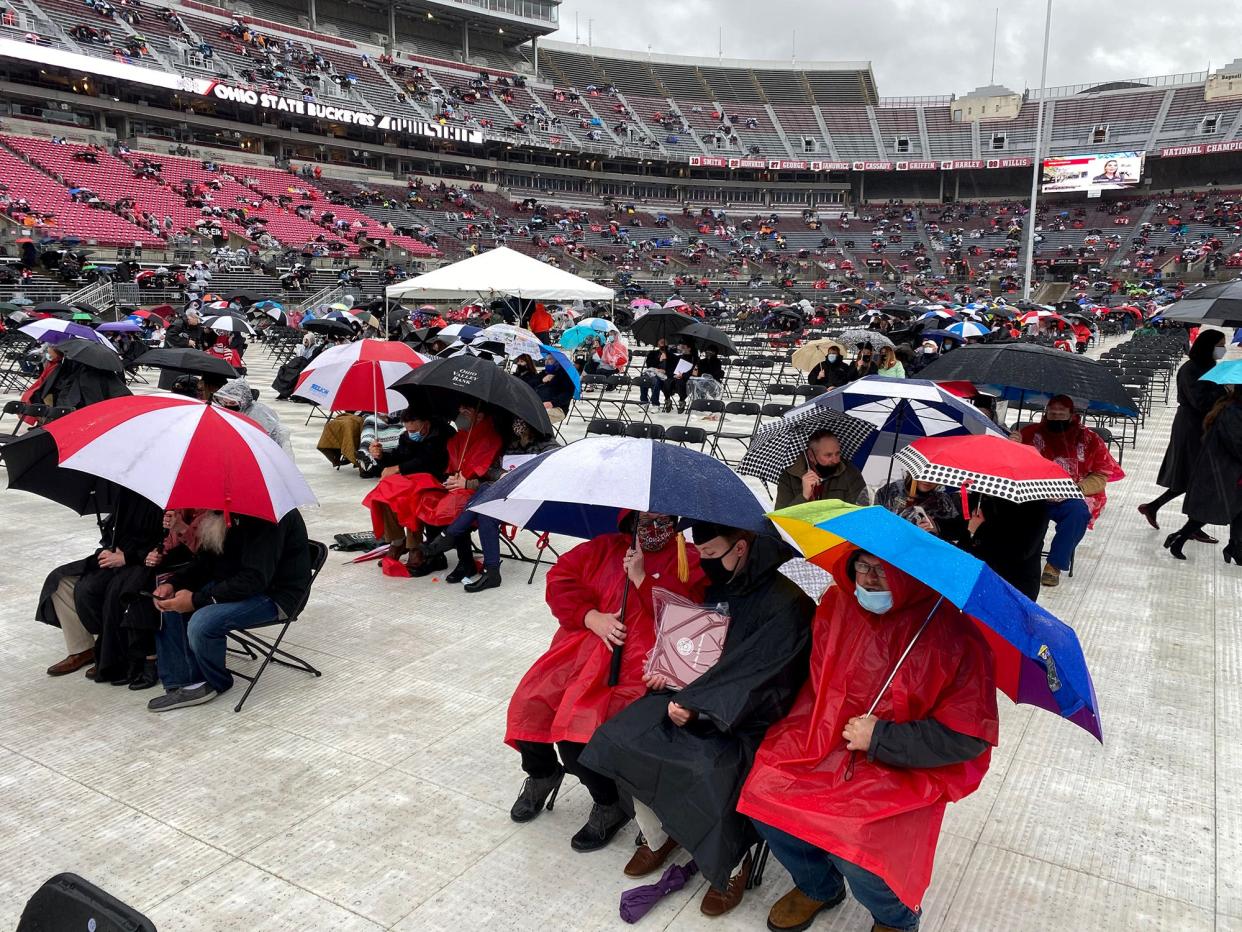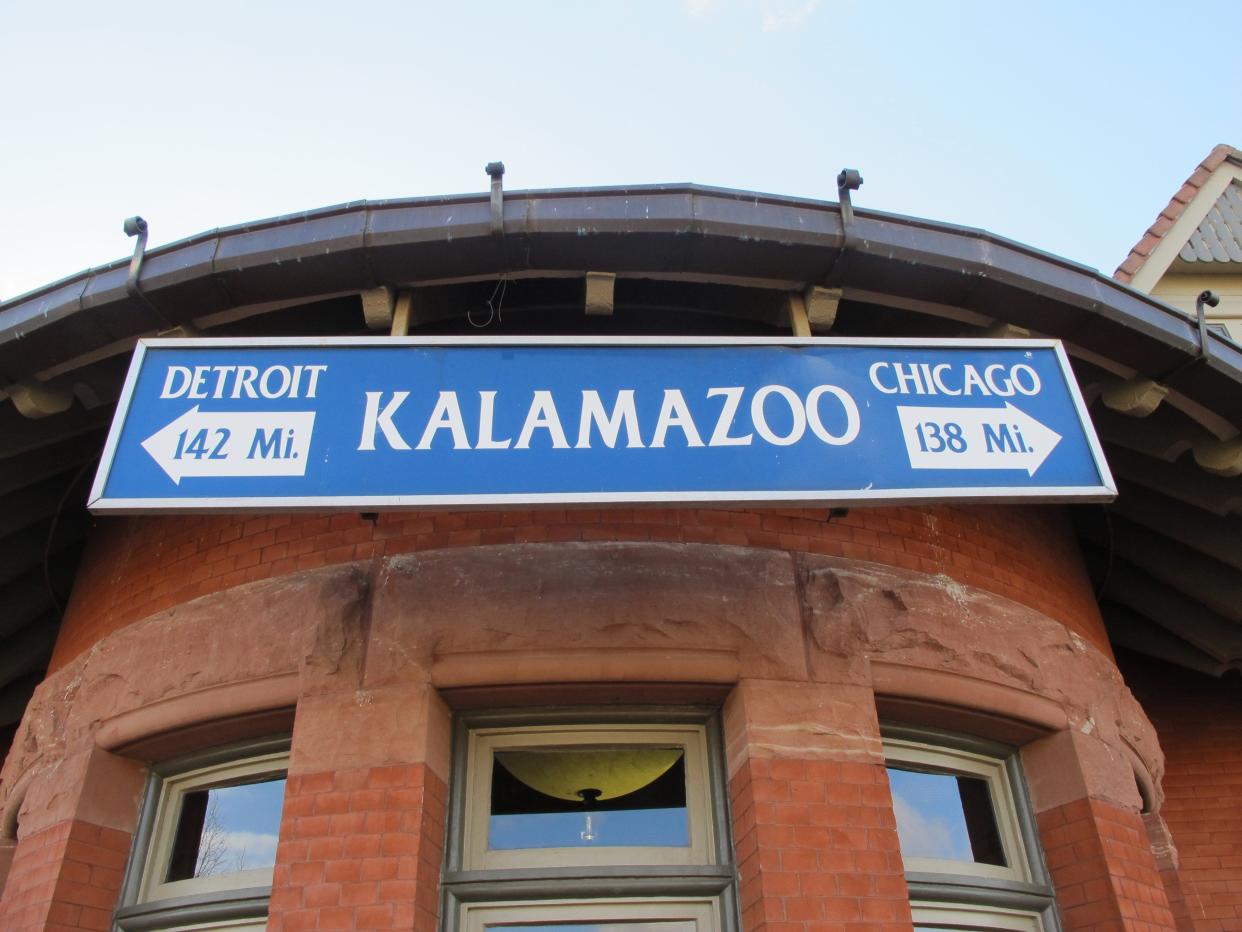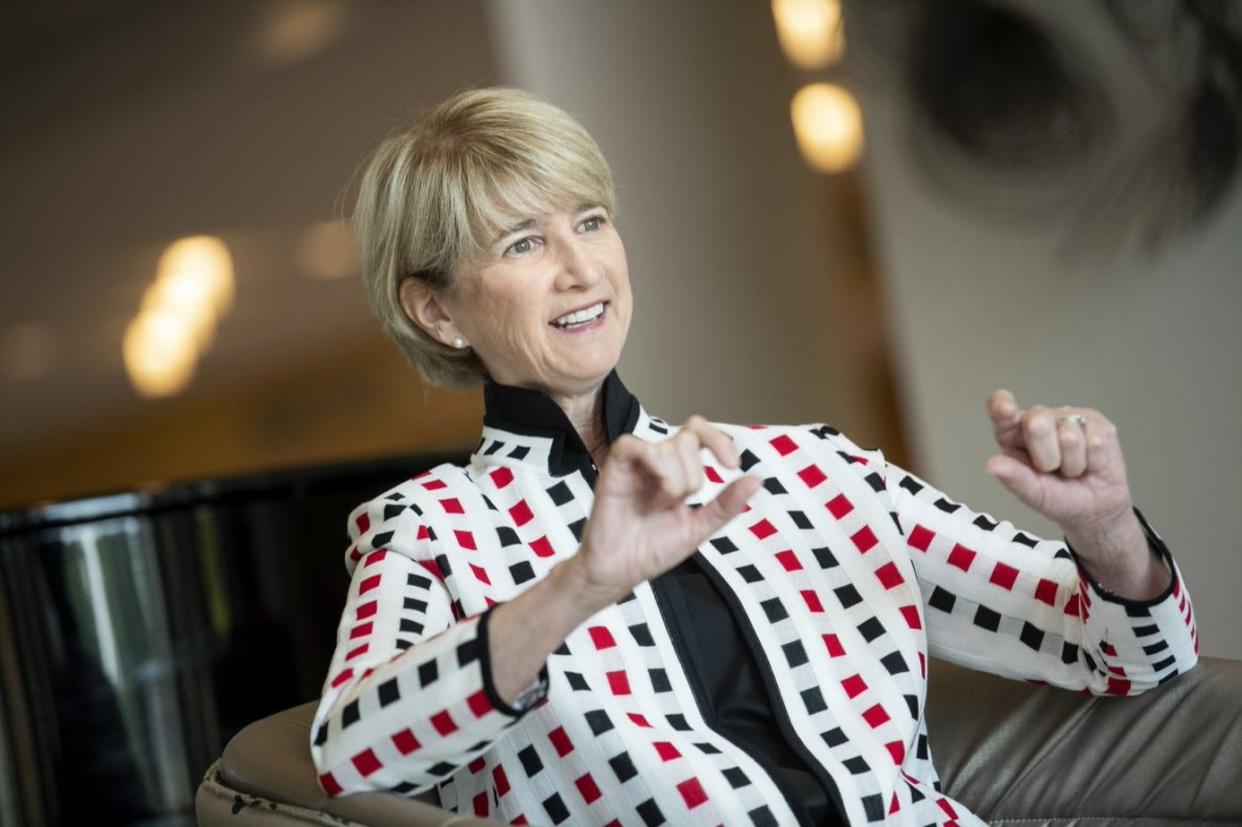Biden's free college plan never happened. Are debt-free degrees the answer to student loan crisis?
President Joe Biden’s free college plan has failed to materialize, and debt-free programs from colleges are typically limited to the most exclusive institutions in the country.
Ohio State University is hoping to change that. The university’s president, Kristina M. Johnson, announced a pilot Friday to provide 125 students a way to cover their educational costs without turning to the federal government or private lenders.
The pilot will cover only a sliver of the 47,000 undergraduates at the Columbus campus. Still, Johnson hopes within 10 years to offer what the university is calling the "Scarlet & Gray Advantage" to all students at Ohio State, one of the largest public universities in America.
“It’s not free college,” Johnson said in an interview. “It’s a pathway students can travel to get a college education without debt.”
Stay in the know: For more news on the student loan crisis and other can’t-miss moments of the day, sign up for the Daily Briefing.

Ohio State is unveiling details about the plan as the nation’s student loan debt portfolio has swelled to $1.7 trillion, but most of the nation’s borrowers have enjoyed a nearly two-year reprieve from paying on those loans. The federal government’s pause on student loan payments is set to end Feb. 1, and calls for widespread debt forgiveness remain prevalent.
Some opponents of debt forgiveness say it would disproportionately benefit high-income earners with high debt, such as attorneys or doctors, who have the ability to pay back their loans. Critics also say forgiving all current student debt would be a one-time fix, a sentiment Johnson echoed. A long-term solution, she argued, requires reducing debt before students graduate.
There will be caveats to the Ohio State plan. Families may still be expected to contribute to the cost of college; for fairness, the university will be using the government's Expected Family Contribution calculation. Students will have to attend classes full time and graduate within four years. (The university says it will make exceptions on a case-by-case basis.)
More on the plan: Ohio State's new president lays out plan for debt-free bachelor's degree at investiture
The four-year requirement comes with some controversy: The national four-year graduation rate for first-time students attending public college full time is about 40%, whereas the six-year rate is about 62%, according to federal government data. Johnson told USA TODAY the plan would include additional academic support to help students graduate on time.
If Ohio State reaches its goal, it would join a handful of colleges that offer students the opportunity to graduate without debt. But families looking to save on college costs by attending one of those colleges may never get that chance.
All of those institutions – including Harvard, Stanford and the University of Chicago – have acceptance rates in the single digits. While their massive endowments help cover the costs of financial aid, applying to a highly selective college is an expensive endeavor, often including tutoring, expensive extracurricular activities and test-preparation courses.
Johns Hopkins University showed how hard it can be for colleges to guarantee a debt-free education. The university started offering its program only after a $1.8 billion gift from one of its most charitable alumni and one of the richest men in America, politician and entrepreneur Michael Bloomberg. Johns Hopkins' acceptance rate is about 11% for first-time students.
Most of America’s public four-year universities don’t have alumni with pockets as deep as Bloomberg's. And the aid they can offer depends on icompeting factors like state funding and philanthropy.
The scope of Ohio State's plan, though, would make it one of the largest of its kind. To make it a reality, Johnson said, the university would need to raise about $800 million over the next decade.
What about student loan forgiveness? How half a million people will benefit from overhaul, some immediately
The hidden cost of free college
Ohio State’s plan bears similarity to many regional or statewide efforts to reduce the price of a college education to encourage students to attend.
So-called College Promise Programs have the potential to increase the number of students who attend college, said Laura Perna, a University of Pennsylvania professor who oversees a project that documents such efforts.
The programs come in many shapes and forms throughout the country. The best known of them might be the Kalamazoo Promise, a scholarship program that covers up to 100% of “tuition and mandatory fees” to Kalamazoo Public Schools graduates who attend a public community college or university in their home state of Michigan.

Some cover entire states. In New Mexico, money from the state lottery is funneled into scholarships for local students who decide to attend a public college within the state.
Promise programs are usually tied to individual colleges or limited to students from a specific city or state. The motivation, Perna said, is to ensure the community has plenty of college graduates to help the local economy.
The programs aren’t free rides for students. Many cover students’ tuition costs, which does reduce their out-of-pocket expenses but doesn’t cover everything. Students still must cover their rent, books, fees for extracurricular activities and other costs tied to the college experience.
Even without a promise program or a debt-free initiative, most college students are receiving financial aidfrom even the most cash-strapped colleges, reducing the students’ contribution beyond the advertised sticker price. What’s more, the federal government offers aid to low-income students in the form of Pell Grants, which currently can provide up to $6,495 per academic year.
But the lack of clarity around pricing may deter students. It’s not enough, Perna said, for students to be prepared academically for college. They also must know, Perna said, “that they can afford the costs and that there’s a way to pay them.”
Who should pay for college?
About 3 in 5 graduates in the state of Ohio leave college indebted, with an average debt load of $30,600, according to the Institute for College Access and Success, an advocacy group that releases an annual report on student loan debt.
At Ohio State, about 47% of undergraduates leave the institution with debt, which averages $27,000, according to data from the university.
Johnson said that had she graduated with that amount of debt more than four decades ago, she might not have found her way into academia. Student loans, she argued, are limiting graduates’ career prospects.
“They’re making choices for a better-paying job, not the thing they’re the most passionate about,” she said.

Johnson is also aware that some students in the Scarlet & Gray Advantage may still take out loans to help pay for the cost of their education, particularly students from wealthier families who may not qualify for need-based aid based on the government's EFC calculation.
Federal data shows some students who attend loan-free schools still borrow, but they generally do so at lower rates. Part of the purpose of Ohio State's pilot is to identify where students may still need help, Johnson said.
The pilot project will start in the next fall semester, and its participants will be from low- and middle-income backgrounds. Eventually, Johnson hopes that all students who attend the university will have the opportunity to graduate without debt, regardless of their financial resources. Out-of-state students – who usually pay more than their in-state peers at public colleges – also would be eligible for the program.
Other colleges try 'income share agreements': They let students ditch extra loans. But will students pay more in the long run?
No single university can solve the problem of providing an affordable degree to all who want it. Ohio State University accepts substantially more students than elite private colleges, but its acceptance rate is still about 50%. The hope for free community college under the Biden administration was that it would open the doors to higher education to anyone who wanted it.
But even without that federal program, Perna said, prospective students can find hope in the growing number of college and local programs as universities and local leaders rethink who should be responsible for paying for college.
“All of those do reflect real concern about how much it costs to go college,” she said.
This article originally appeared on USA TODAY: Student loans: Without Biden's free college, Ohio State goes debt-free
